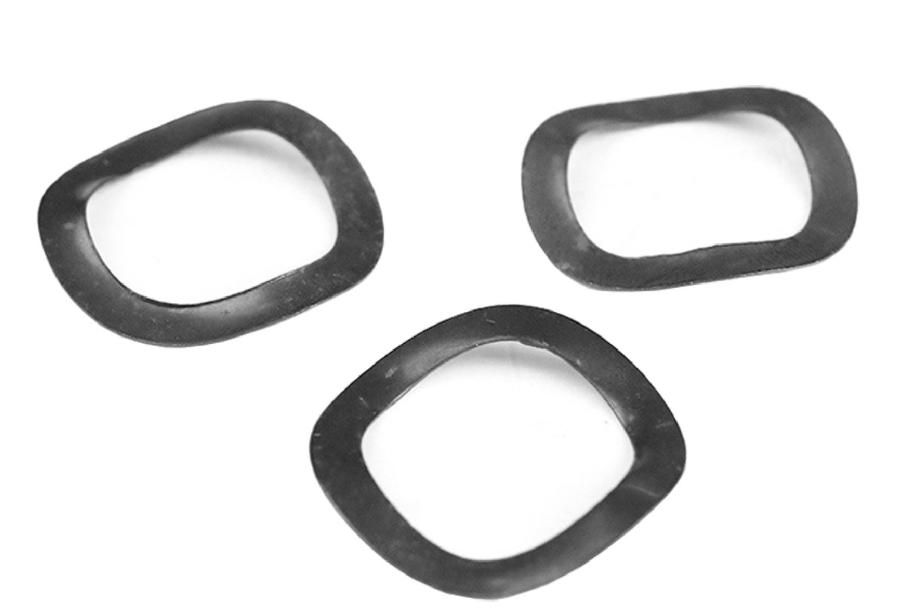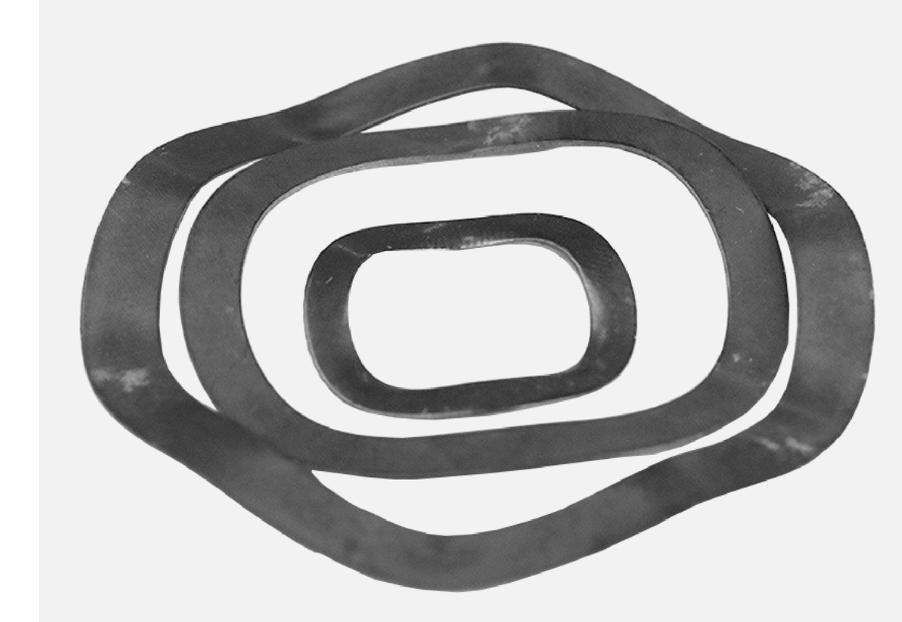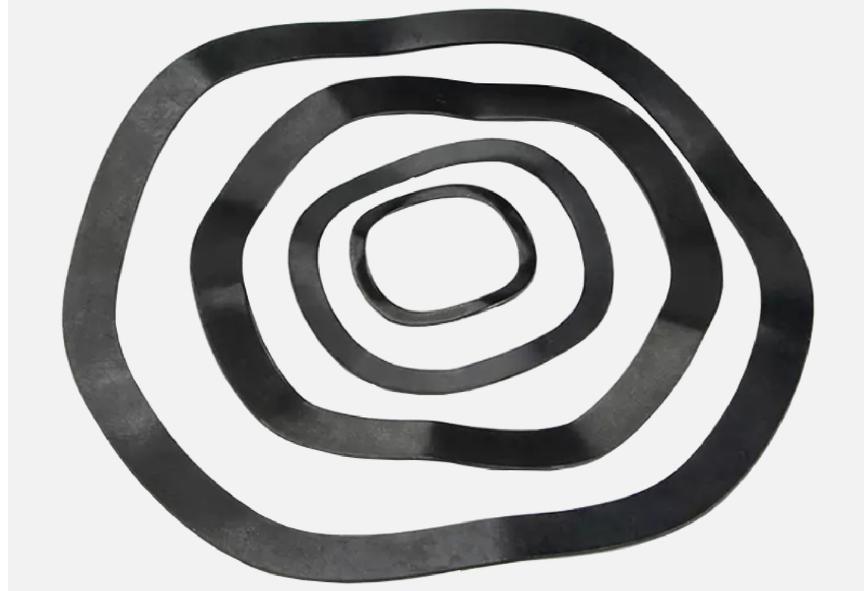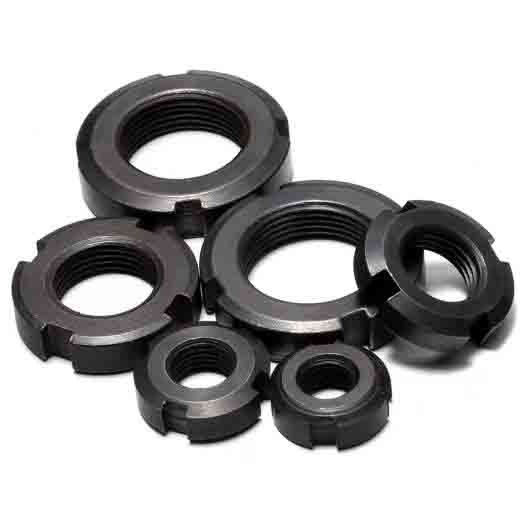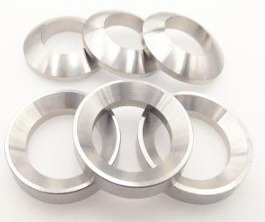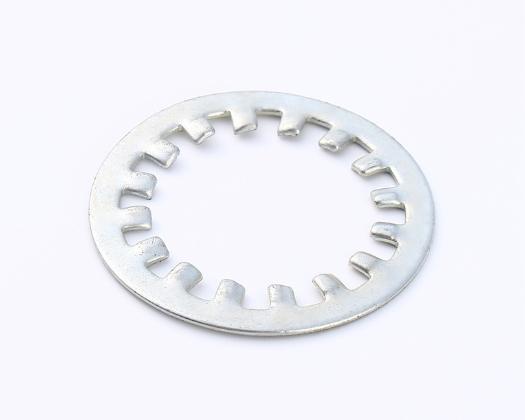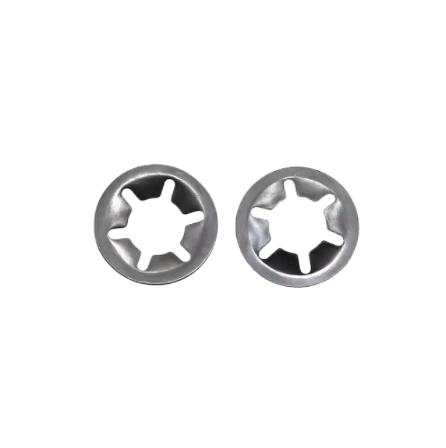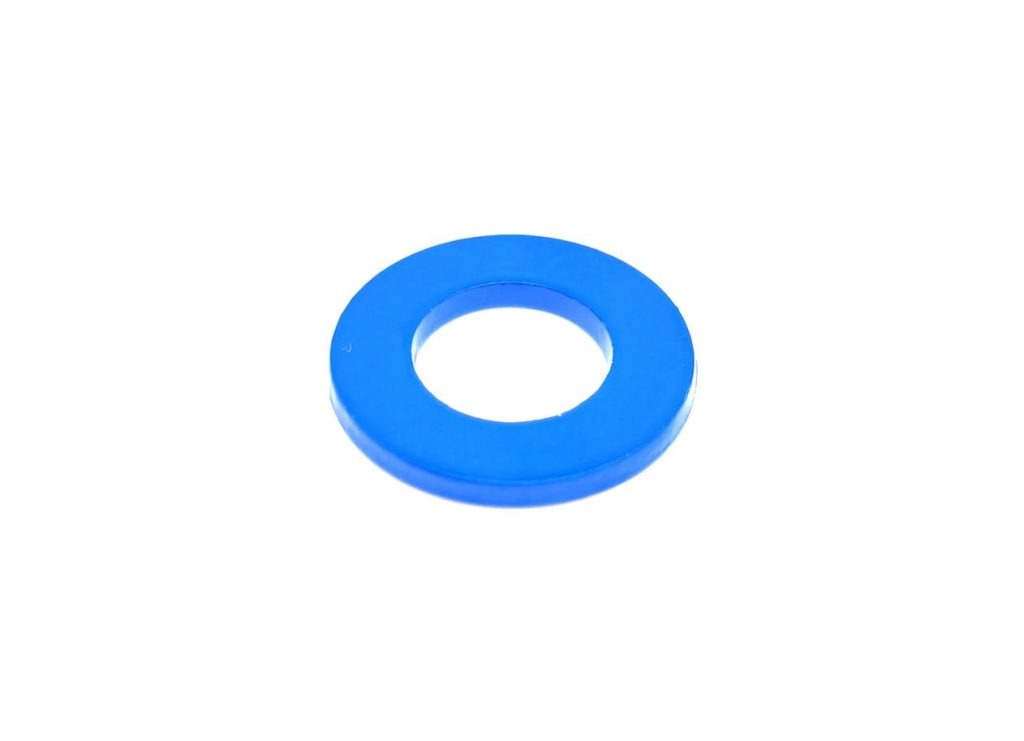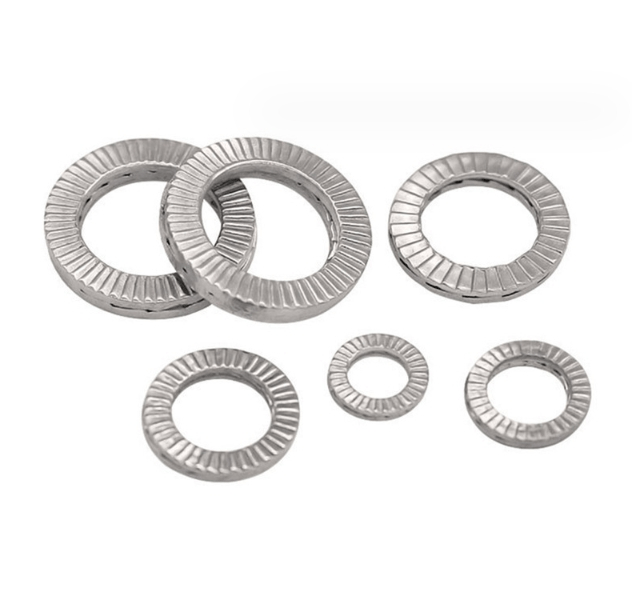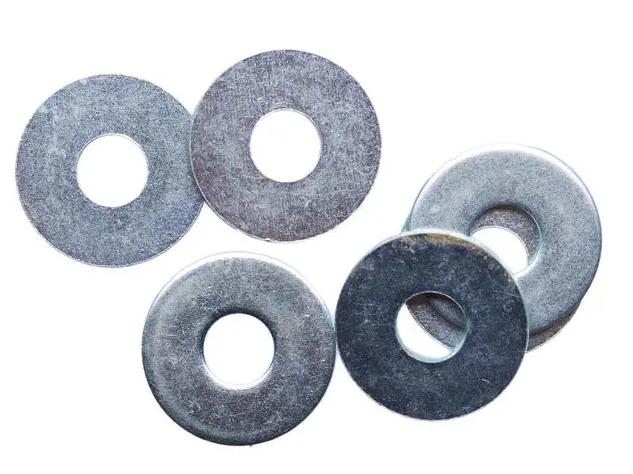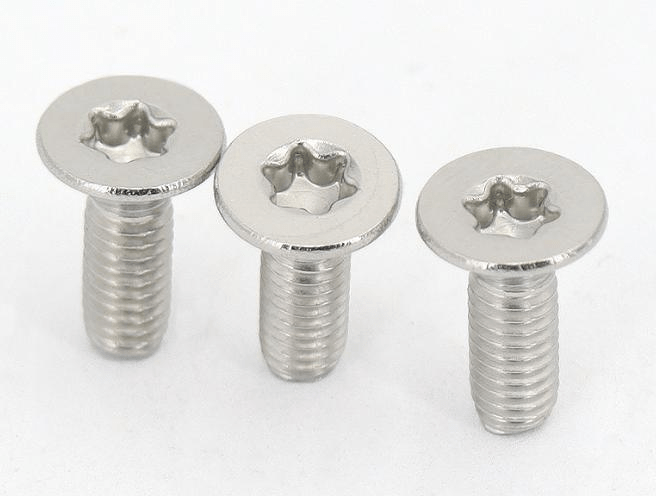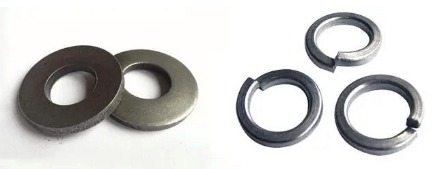Wave Washers
Specifications of Wave Washers
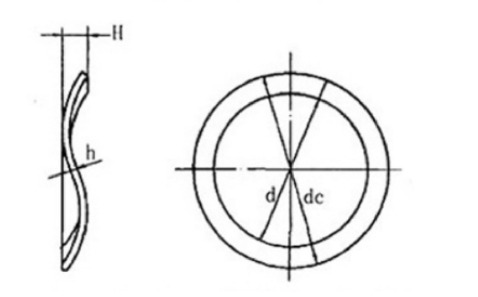
| Inside diameter | Outside diameter | Free hight≈ | Thickness |
| 4 | 8 | 1.1 | 0.25 |
| 5 | 10 | 1.3 | 0.25 |
| 6 | 11 | 1.4 | 0.3 |
| 8 | 12 | 1.5 | 0.3 |
| 10 | 13.5 | 1.6 | 0.3 |
| 12 | 18 | 1.6 | 0.3 |
| 14 | 18 | 1.6 | 0.3 |
| 14 | 21 | 1.7 | 0.3 |
| 16 | 21 | 2.0 | 0.3 |
| 19 | 25 | 2.5 | 0.4 |
| 21 | 27 | 2.7 | 0.3 |
| 23 | 29 | 3.1 | 0.4 |
| 25 | 31 | 2.9 | 0.4 |
| 27 | 34 | 3.1 | 0.4 |
| 30 | 39 | 3.2 | 0.5 |
| 34 | 41 | 3.3 | 0.5 |
| 38 | 46 | 3.8 | 0.5 |
| 40 | 50 | 4.0 | 0.5 |
| 50 | 61 | 4.0 | 0.5 |
| 60 | 70 | 4.2 | 0.5 |
| 70 | 79 | 4.4 | 0.5 |
| 73 | 83 | 4.4 | 0.6 |
| 75 | 85 | 4.4 | 0.6 |
| 70 | 88 | 4.9 | 0.6 |
| 86 | 98 | 4.7 | 0.6 |
| 98 | 108 | 5.2 | 0.6 |
| 108 | 118 | 5.2 | 0.6 |
| 118 | 128 | 5.5 | 0.6 |
Superior Features of Wave Washers
1. Shock absorption and cushioning performance
Principle
• The wave shape of the wave washer enables it to produce elastic deformation when under pressure. When the equipment vibrates, the wave washer can absorb and cushion these vibrations through its own elastic deformation.
• For example, in the connection of some components of automobile engines, wave washers can effectively reduce the transmission of vibrations generated during engine operation to other components, thus protecting these components from vibration damage.
Application cases
• In some high-speed rotating mechanical equipment, such as motors and fans, wave washers are often used to reduce the vibrations and noises during equipment operation and improve the smooth operation and reliability of the equipment.
2. Anti-loosening function
Principle
• Wave washers will generate a certain axial elastic force when installed. When bolts tend to loosen, this elastic force will prevent the bolts from rotating, thus playing an anti-loosening role.
• Compared with ordinary flat washers, the wave shape of wave washers enables them to provide sufficient elastic force to prevent bolts from loosening in a smaller space.
Application cases
• Wave washers are widely used in the connecting bolts of railway tracks. Railway tracks will be subjected to huge impact forces and vibrations when trains pass by. Wave washers can ensure that the connecting bolts will not loosen during long-term use and guarantee the safety of railway operation.
3. Space-saving
Principle
• The wave shape of wave washers enables them to occupy relatively less axial space while providing shock absorption and anti-loosening functions, which is very beneficial for the design of some mechanical structures with limited space.
Application cases
• In the assembly of some precision instruments, due to the compact internal space, wave washers can achieve effective shock absorption and connection anti-loosening functions without occupying too much space.
4. Load-bearing capacity
Principle
• The materials of wave washers usually have relatively high strength and hardness and can bear large axial loads. The wave shape can evenly distribute the pressure when under force and avoid stress concentration.
Application cases
• In the connection parts of heavy mechanical equipment, such as cranes and excavators, wave washers can ensure the reliability and stability of the connection while bearing large loads.
Manufacturing processes of Wave Washers
1. Stamping process: Pressure is applied to metal sheets through dies to cause plastic deformation and form the required shape of wave washers. Usually, punch presses are used. The sheets are placed on the dies, and through the stamping actions of the upper and lower dies, the wave shape is stamped out in one go or through multiple stamping operations.
2. Rolling process: The rolling process utilizes rolling dies with wave-shaped grooves or protrusions on metal sheets or wires to roll out the wave shape. Through the rotation and pressure of the rollers, the material is gradually deformed into the wave shape.
3. CNC machining process: CNC machine tools are used. By programming to control the cutting tools to perform cutting operations on metal materials, wave washers are formed. It can precisely control the size, shape and precision of the washers.

